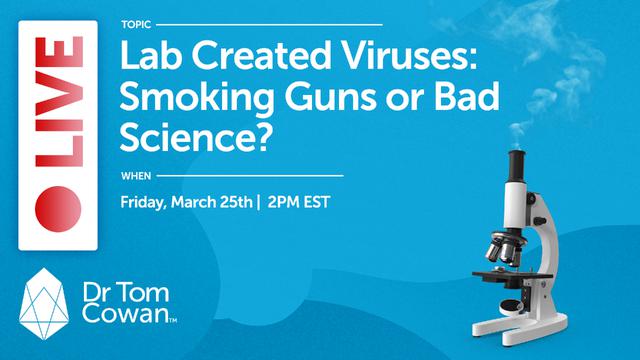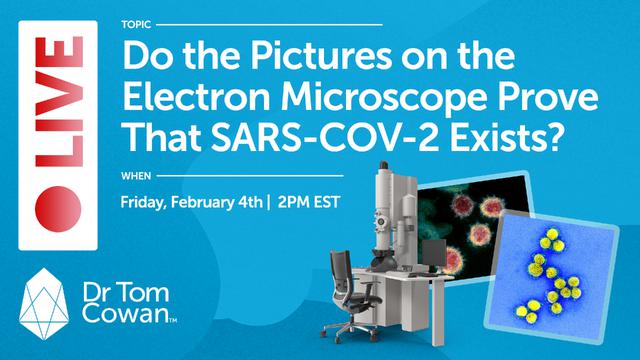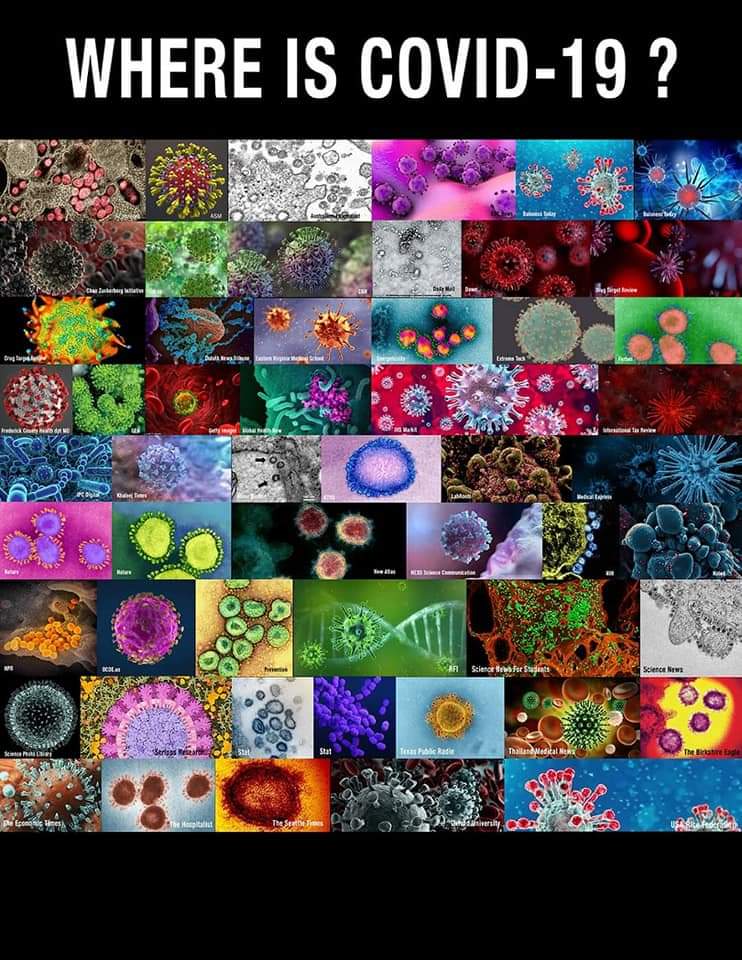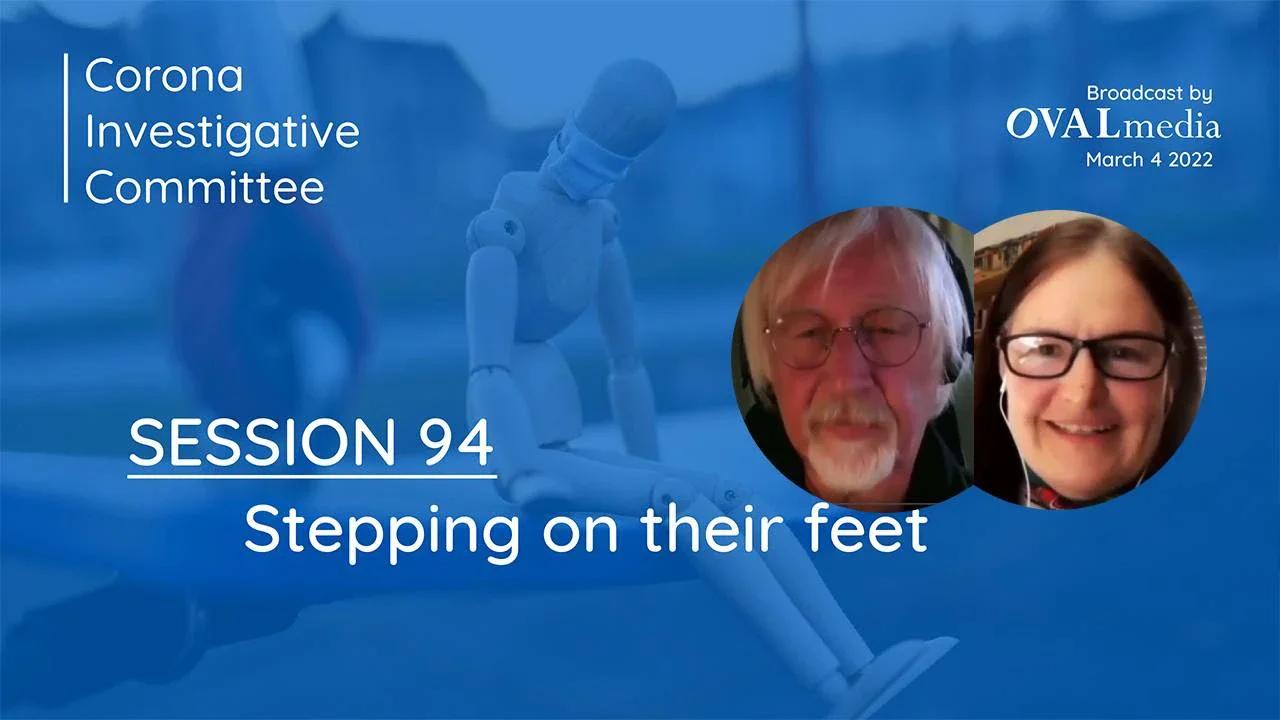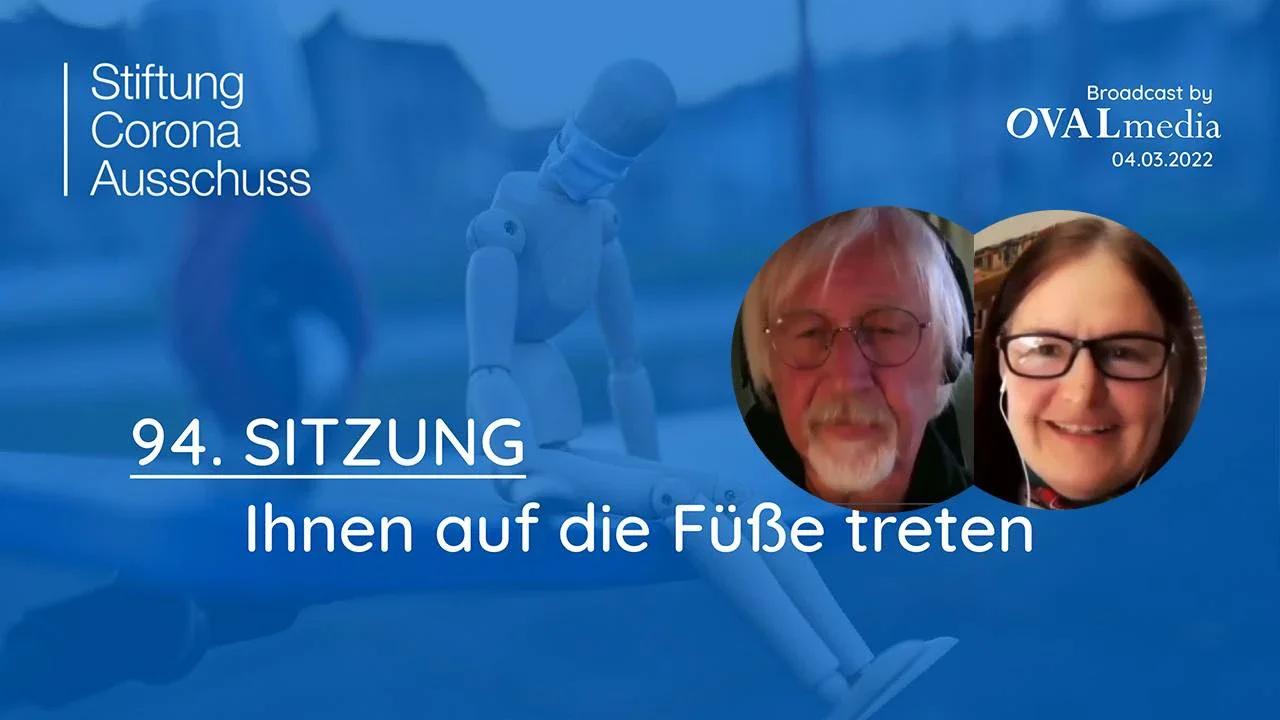Since the onset of the COVID-19 pandemic, we regularly receive emails from people forwarding links to videos and articles that question the mainstream narrative about the pandemic. It would be a full-time job for more than one person to take in, analyze, and contextualize the great variety of perspectives. We have not made this our full-time job. But we have concerned ourselves with some of the alternative narratives, and continue to concern ourselves with the mainstream narrative. We have no problem admitting that, overall, much remains opaque. More than anything else, there are countless riddles and questions. It is very hard, within the thicket of opinions, to gain a sense that there is a common ground of phenomena that people can agree upon. This is especially true with research on viruses, which is extremely technical, highly mediated by sophisticated technology (electron microscopes, sequencing machines, PCR tests, etc.), and embedded within many assumptions, for example, about causality. You can hardly avoid relying on authorities, but which authorities? How is it possible to discern the truthfulness of what the different authorities are saying?
One person whose views have received a good deal of attention is Thomas Cowan. A video in which he speaks of 5G — and not viruses — as a causal agent in what people call the pandemic went viral. Many refer to him as an authority countering the mainstream narrative, while others state they have debunked his views. Cowan and Sally Fallon Morell published a book in 2020,
The Contagion Myth. We decided to spend some time with the book in an attempt to understand their perspective. We have not spent the months we would need to investigate every claim they make by reviewing the literature they cite in the book.
We have spent many hours investigating a few central claims and the way they craft their argument. We will not discuss here the causal factors they propose, such as 5G or environmental toxins.
We are primarily concerned with their critique of the widespread scientific view that infectious diseases are caused by viruses (and bacteria).
Misrepresenting Research Studies — Three Examples
To begin with, we consider two examples from
The Contagion Myth that are indicative of the way in which Cowan and Fallon Morell report on mainstream research concerning infectious diseases. The first example refers to bacterial infection and the work of Robert Koch (1843-1910), one of the founders of the germ theory of disease. They briefly consider Koch’s research on tuberculosis (TB):
In 1905, Dr. Koch received the Nobel Prize for proving that TB was an infectious disease.
Except he didn’t.
In fact, he could find an organism in infected tissue only by using special staining methods after the tissue was heated and dehydrated with alcohol. The stain was a toxic dye, methylene blue, and the solution he used contained another toxin — potassium hydroxide (lye). When he injected the organism stained with these poisons into animals, they got sick. But what caused the illness, the bacillus or the poisons? (p. 33)
Cowan and Fallon Morell deny that Koch proved that TB is an infectious disease because they claim that Koch injected animals with bacteria
and poisons (stains used in microscopy). Since there were, according to them, two components in the injected solution, Koch could not know whether the bacteria or the toxins were making the animals sick. This makes sense. But did Koch do this? The source for their brief description of what Koch did is the English translation of excerpts from Koch’s famous 1882 paper on the “Etiology of Tuberculosis” (Koch 1982).
We read the excerpts and then also read the original and much longer German article (Koch 1882).
Koch describes in detail his procedures to examine the tissues that he had taken from the organs of animals that had been “altered by tuberculosis” (p. 1270). As Cowan and Fallon Morell relate, methylene blue and potassium hydroxide were used in the staining procedure. Staining allows the bacteria to stand out under the microscope and makes it easier to distinguish different bacterial species from one another. Koch writes, “in all locations where the tuberculosis process has recently developed and is progressing most rapidly, these bacilli can be found in large numbers” (p. 1271). He concludes, “on the basis of my extensive observations, I consider it proven that in all tuberculous conditions of man and animals there exists a characteristic bacterium which I have designated as the tubercle bacillus, which has specific properties which allow it to be distinguished from all other microorganisms.”
Koch then states “from this correlation between the presence of tuberculous conditions and bacilli, it does not necessarily follow that these phenomena are causally related” (p. 1271). His next step was to isolate bacteria from the body and propagate them in pure cultures in the lab until they were freed from parts of the host organism that might still have adhered to the bacteria. For this he developed a solid nutrient medium on which to culture bacteria. He describes in detail all the steps he took to cultivate the bacteria until he had pure cultures. The whole point of the many procedures was to obtain pure, uncontaminated cultures. These pure cultures were never stained. He only stained bacteria in order to identify them under the microscope.
He did not inoculate experimental animals with stained bacteria and “poisons” as Cowan and Fallon Morell claim.
In his paper, Koch goes on to describe how he inoculated experimental animals — mainly guinea pigs — with the pure bacterial cultures and states that in all cases but one the animals developed the symptoms of tuberculosis. For him this was a proof that the bacteria cause the disease and are not just correlated with it.
It is not possible for us to understand how anyone could read Koch’s article and come away with the conclusion that he inoculated animals with a mixture of bacteria and toxic stains. We cannot judge what led Cowan and Fallon Morell to misrepresent Koch’s procedure, but
they did not read Koch’s article with the intent to present Koch’s work as accurately as possible. The way they misrepresent Koch allows them to erroneously discredit Koch as a serious researcher, implying that Koch was not smart enough to know that injecting bacteria and toxic stains into animal would provide no proof of the bacteria as disease-causing agents. As his tuberculosis article and his many other articles show, Koch was a remarkably thorough, critical, and careful researcher.
The second example concerns an article published in 2020 describing animal experimentation with SARS-CoV-2, the virus implicated by mainstream science and medicine in the current pandemic (Chan et al. 2020). Here is what Cowan and Fallon Morell write about what the researchers did:
They took unpurified, lung-cancer-grown, centrifuged snot and (again, without any controls) squirted it down the throats and into the lungs of hamsters. (Where is PETA when you need them?) Some, but not all, of the hamsters got pneumonia, and some died. We have no idea what would have happened if they had squirted plain lung cancer cells into the lungs of these hamsters, but probably not anything good. And even more perplexing, some of the hamsters didn’t even get sick at all, which certainly doesn’t square with the deadly, contagious virus theory. (p. 52)
In contrast to what they report, if you read the article you will find that, while the researchers did experiment with hamsters,
- they did not mix “unpurified, lung-cancer-grown, centrifuged snot”;
- they did not squirt such a mixture down the throats and lungs of the hamsters;
- what they squirted into the nasal passages of anesthetized hamsters they describe as diluted “virus stocks” that were obtained from “plaque purified viral isolate” that had been amplified by culturing in VeroE6 cells (which are derived from monkey cells, not lung-cancer cells);
- these animals became ill, and recovered;
- they do not report that some of these animals “didn’t even get sick at all”;
- none of the animals died;
- the experiment did have controls; the controls had saline solution, without viral stock, squirted into their nasal passages; none of the controls became ill. (See Chan et al. 2020.)
Just about everything Cowan and Fallon Morell relate from the article is false. As in the case with Koch’s tuberculosis experiments,
they grossly misrepresent what the researchers did and found in their experiments. If they would have taken care in studying the article, they could have justifiably criticized the lack of detailed reporting on the method of virus isolation and purification; they could have criticized the researchers for saying that Koch’s postulates had been fulfilled in this case, since those criteria don’t apply to viruses (see below).
But Cowan and Fallon Morell did none of this; they simply reported on an experiment that never happened in the way they describe it.
Cowan and Fallon Morell are similarly cavalier with the work of those they cite to support their views. They introduce the intriguing work of Luc Montagnier concerning resonance phenomena in aqueous solutions as follows:
Here’s how the experiment goes: first, one puts DNA or RNA in water (beaker one). Then one puts a collection of nucleic acids (the chemicals that make up the DNA and RNA) in a separate water beaker (beaker two), in another part of the room. Then one introduces an energy source, such as UV or infrared light and shines that on beaker one, which contains the formed DNA or RNA. In time, the exact same sequence of DNA or RNA will form out of the raw materials in beaker two. (p. 76)
In the paper that Cowan and Fallon Morell cite (Montagnier et al. 2009), the researchers describe a series of experiments that lead them to posit the “capacity of some bacterial DNA sequences to induce electromagnetic waves at high aqueous dilutions.” The process of obtaining and diluting bacterial DNA and the apparatus needed to determine the presence of the electromagnetic signals are presented in some detail.
The only part of the paper that bears any resemblance to Cowan and Fallon Morell’s description deals with the “homologous ‘cross-talk’ between dilutions.” Discovering the resemblance demands an act of imagination on the part of the reader.
The researchers make high dilutions of bacterial DNA sequences (10-8 to 10-12). Only at the high dilutions could they detect specific electromagnetic signals that differed from the rest of the detectable ambient electromagnetic “noise.” These they call “loud” dilutions. Lower dilution bacterial DNA sequences (10-3) were “silent,” and did not emit those signals. In one experiment, they placed “loud” and “silent” dilutions in capped plastic tubes side-by-side in a mumetal box that shields the samples from ambient electromagnetism. They observed, after 24 hours, that the loud dilutions became silent. When a mumetal shield was placed between the two dilutions in the 24-hour experiment, the effect did not arise. They speak of a resonance phenomenon and cross-talk between the dilutions. Such results only occurred between dilutions of DNA of the same species.
As you can tell, there is hardly any similarity between what Cowan and Fallon Morell describe and what you can find in the article. There is nothing in the article stating that “the exact same sequence of DNA or RNA will form out of the raw materials in beaker two.” Montagnier and colleagues are detecting electromagnetic signal changes, not the resonant creation of specific DNA sequences from a collection of nucleotides.
In the discussion of their results, the researchers point out that the production of
such electromagnetic signals has only been able to be repeated “with only certain bacterial sequences.” And they raise the question whether “they are restricted to some genes involved in diseases.”
Although Montagnier is not someone known for his reticence or hesitancy in voicing his views, in this paper he and his fellow authors are quite tentative in their conclusions.
They do not claim that their experiments “prove” anything. The experiments “suggest” the presence of a phenomenon that they believe deserves further consideration.
Cowan and Fallon Morell are less tentative in their conclusions, building a theory of disease based on the possibility of resonance phenomena between people living in similarly toxic situations:
When one applies this discovery to viruses (or exosomes) said to cause measles, chicken pox, or herpes, it is possible that since these particles called viruses or exosomes are simply packages of DNA or RNA, they emit their own resonant frequencies. In a way not yet determined, each frequency creates an expression that we call a disease; however, the frequency will create what we call illness only if there is a purpose or reason for the illness. (p. 77)
For Cowan and Fallon Morell to use the tentative conclusions of a study as the basis for positing causal relationships in a context that is foreign to that of the original experimentation is highly problematic. You can wish that they would be as critical of their own methods as they are of those they choose to criticize.
These examples — and there are more in the book —
show that when Cowan and Fallon Morell refer to research studies, you need to read the studies yourself to see if their depiction in any way conforms to what was done. Such misrepresentations provide plenty of reason not to trust what they say concerning the research others have carried out. Ironically, they repeatedly accuse mainstream researchers of making bogus and fraudulent claims.
Argumentation Strategy
Cowan and Fallon Morell are centrally interested in convincing their readers that bacteria and viruses do not cause disease; hence the title:
The Contagion Myth.
Before they deal with Koch’s research on tuberculosis, they refer to the famous “Koch’s postulates.” These are drawn from Koch’s research and have historically provided a conceptual framework for assessing whether a specific bacterial species can be considered the cause of the disease. Koch’s postulates have been expressed in a variety of ways. Koch himself did not speak of postulates and presented his views on criteria for evidence of causation differently in different publications and at different times in his career (Carter 1985; Evans 1976 and 1993; Gillies 2016; Gradmann 2014). Cowan and Fallon Morell, however, choose to present one particular formulation:
Koch’s postulates are as follows:
- The microorganism must be found in abundance in all organisms suffering from the disease but not found in healthy organisms.
- The microorganism must be isolated from a diseased organism and grown in a pure culture.
- The cultured microorganism should cause disease when introduced into a healthy organism.
- The microorganisms must be re-isolated from the now diseased experimental host which received the inoculation of the microorganisms and identified as identical to the original specific causative agent.
If all four conditions are met, you have proven the infectious cause for a specific set of symptoms. This is the
only way to prove causation. (p. 3)
For their overall argument, it is important for Cowan and Fallon Morell to categorically state that the fulfillment of these four postulates is the
only way to prove causation.
Holding on to this claim as if it were a self-evident truth, they can go on to “show” that Koch and others have never proved that a disease is caused by bacteria or other microorganisms. This can be for a number of reasons, but especially postulate #1, in the way they formulate it, is rarely (or ever?) fulfilled.
This is because bacteria that are implicated in a given disease can be found in some or even many healthy individuals. This was known to Koch, and it has been widely known since his time. We all harbor bacteria that, in other people, or at a different time or in different circumstances in us, can be implicated in a disease. One example is
Helicobacter pylori, which can persist in the stomach of a person who is healthy, but can also be connected with gastric ulcers (for a number of examples, see: Monack et al. 2004; Fisher et al. 2017).
So Cowan and Fallon Morell have a neat solution to a complex issue: Because Koch’s postulates are never completely fulfilled, scientists have not proven that bacteria cause disease. The problem with this neat solution is that they set a fixed standard against which everything, for all times, needs to be assessed. They rail against scientists who state that Koch’s postulates are outdated (pp. 73ff.).
As I said above, Koch himself never spoke of postulates and “his” postulates have been formulated in a variety of ways by different scientists. As Cowan and Fallon Morell themselves point out (p. 3), Koch knew that the criteria for causation he had articulated in his tuberculosis experiments could not all be fulfilled, for example, in cholera; experimental animals did not become ill when injected with cholera bacteria that had been cultured from ill humans. Nonetheless, Koch gave a variety of reasons why he thought bacteria are causal agents in cholera.
Cowan and Fallon Morell pick out one formulation of Koch’s postulates as their universal measuring stick. They even compare the postulates to Newton’s laws of gravity (p. 75).
They don’t allow for an evolution of scientific thought in relation to the variety of phenomena scientists encounter. This is a convenient and pretty iron-clad way to make sure that no one can claim to have proven causation for a purported bacteria-related disease. Unfortunately, it also means not dealing with the complexities of biological realities, research, and the nature of understanding.
When Cowan and Fallon Morell address diseases that are purported to be related to viruses, they implement the same strategy. Koch’s postulates have to be modified for viruses because viruses only reproduce within living cells of another organism. They cannot be grown on nutrient media, but need to be grown in cell cultures. They then have to be separated from tissues (which is an involved process) before scientists speak of “viral isolates” that can then be used in inoculation experiments.
As they did with Koch’s postulates, Cowan and Fallon Morell take one set of criteria against which they judge all experiments relating to viral causation of disease. They enumerate “River’s postulates,” which are based on a 1937 article by bacteriologist and virologist Thomas Rivers (Rivers 1937). They present one formulation of Rivers’ postulates:
- The virus can be isolated from diseased hosts.
- The virus can be cultivated in host cells.
- Proof of filterability — the virus can be filtered from a medium that also contains bacteria.
- The filtered virus will produce a comparable disease when the cultivated virus is used to infect experimental animals.
- The virus can be re-isolated from the infected experimental animal.
- A specific immune response to the virus can be detected. (p. 4)
This list doesn’t come directly from Rivers, whose discussion of the task of establishing causality is remarkably nuanced. Writing about the necessity of moving beyond Koch’s postulates, both for some bacterial diseases and for viral diseases, Rivers remarks that “progress having left behind old rules requires new ones which some day without doubt will also be declared obsolete” (p. 4).
He knew that his new criteria for establishing viruses as agents in infectious diseases were tentative and that changes “will in the future undoubtedly occur in the methods of establishing the specific relation of viruses to disease” (p. 11).
A variety of methods have been developed and other criteria formulated in the 83 years since Rivers’ article (for example: Byrd and Segre 2016; Carter 1985; Evans 1976 and 1993; Fredericks & Relman 1996; Gillies 2016; Gradmann 2014). Science hasn’t stopped.
But for Cowan and Fallon Morell, Rivers’ postulates are the criteria to assess causation related to viruses. They refer to a number of studies related to SARS-CoV-2 and Covid-19, and claim that none of them have fulfilled the postulates (pp. 50 ff.). This is for them proof that viruses don’t cause disease:
Again, this book’s central claim is that no disease attributed to bacteria or viruses has met all of Koch’s postulates or all of Rivers’ criteria. This is not because the postulates are incorrect or obsolete (in fact, they are entirely logical) but rather because bacteria and viruses don’t cause disease, at least not in any way that we currently understand. (p. 4)
Cowan and Fallon Morell continue in a similar vein when it comes to the question of the isolation of viruses.
They present one “gold standard” technique from a thesis of a German virologist, Stefan Lanka (1989). The hundreds or probably thousands of virologists who claim to have isolated viruses are all wrong, according to Cowan and Fallon Morell, because they use other methods to isolate viruses than the one Lanka developed. Lanka’s technique is impressive, but it is not the only one. If you look in the literature,
you find that there is no one “gold standard” for viral isolation (see, for example, Eisfeld et al. 2014; Hematian et al. 2016; Hsiung 1984; Leland & Ginnochio 2007). We are not virologists and cannot assess their respective strengths and weaknesses. But we see no reason to think that all these scientists are deluded or making fraudulent claims, which is what Cowan and Fallon Morell believe they have shown.
Cowan and Fallon Morell write that “the entire world of medicine, virology, and immunology” is mistaken in believing that “many of our common diseases are viral in origin” (p. 67).
Is there reason to believe that people who say “a disease is caused by infectious agents” are oversimplifying a highly complex relationship between a virus, its host organism, and the environment? Absolutely. Is it justified to dismiss 150 years of research that focuses on one aspect of that relationship? We don’t think so.
We do not agree with the widespread, all-too uncritical use of the terms “cause” and “causation” that one finds in the scientific literature, or with the one-sided focus on infectious agents that often ignores the larger questions of health, resiliency, and dispositions for becoming ill. The problem is even worse in mainstream media and politics, where viruses become “the enemy.” We have presented a broader, ecological view of viruses elsewhere (Holdrege 2020). We are open to considering perspectives that challenge the monolithic mainstream narrative.
But when this is done by grossly distorting scientific findings of others and crafting an argument that only appears to work, then more harm than good is done in the search for a balanced and nuanced understanding of infectious disease and the current pandemic.


 Now really, where IS that Rife super microscope ?!?
Now really, where IS that Rife super microscope ?!?


)


